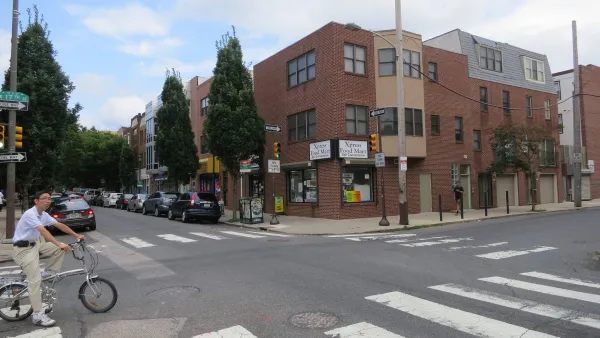Recently approved laws that force cities to take a more proactive approach to the state-mandated Regional Housing Needs Assessment process are beginning to take effect in California.

A detailed article by Benjamin Schneider digs into the changes occurring in California's Regional Housing Needs Assessment (RHNA) process as a result of Senate Bill 828, authored by State Senator Scott Wiener and approved by the California State Legislature in 2018—as part of a package of "housing first" bills that included the more closely monitored, but eventually failed, Senate Bill 827.
"The law beefs up the methodology used to determine each region’s housing allocation, accounting for previous under-production of housing, as well as areas where home prices are rising faster than wages, among other considerations," according to Schneider's explanation.
As a result, the Association of Bay Area Governments (ABAG), working with planners from the Metropolitan Transportation Commission (MTC), must now plan for a doubling of allocated housing for this cycle of the RHNA process.
"Of the Bay Area’s allocation, 26 percent of new homes must be for very low income households, 15 percent for low income, 17 percent for moderate income, and 42 percent for above moderate income," explains Schneider of the allocation announced in June 2020.
ABAG adopted their plan for addressing that allocation on January 21, 2021, reports Schneider, but official certification awaits state approval and likely litigation from the cities responsible for the local plans and zoning changes that will work toward accomplishing the prescribed changes. San Francisco, for example, "needs to plan for a 22 percent increase in households, or 82 thousand more units, between 2023 and 2031. That’s up from an allocation of about 29 thousand homes during the 2014-22 cycle," writes Schneider.
Illustrations of how the housing allocation breaks down around the Bay Area, provided by the MTC, are included in the article, in addition to a lot more details on the plan approved by ABAG earlier this month.
The RHNA methodology has been a source significant political controversy in the state in recent months. A study by the Embarcadero Institute tried to poke holes in the methodology earlier this year. An article recently shared by Planetizen showed how some wealthy cities, Newport Beach in Orange County in this example, but Beverly Hills and Pasadena offer other famous examples, have managed to avoid large allocations through the RHNA process in the past.
FULL STORY: Bay Area Takes Step Toward Major Housing Growth

Analysis: Cybertruck Fatality Rate Far Exceeds That of Ford Pinto
The Tesla Cybertruck was recalled seven times last year.
National Parks Layoffs Will Cause Communities to Lose Billions
Thousands of essential park workers were laid off this week, just before the busy spring break season.

Retro-silient?: America’s First “Eco-burb,” The Woodlands Turns 50
A master-planned community north of Houston offers lessons on green infrastructure and resilient design, but falls short of its founder’s lofty affordability and walkability goals.

Test News Post 1
This is a summary

Analysis: Cybertruck Fatality Rate Far Exceeds That of Ford Pinto
The Tesla Cybertruck was recalled seven times last year.

Test News Headline 46
Test for the image on the front page.
Urban Design for Planners 1: Software Tools
This six-course series explores essential urban design concepts using open source software and equips planners with the tools they need to participate fully in the urban design process.
Planning for Universal Design
Learn the tools for implementing Universal Design in planning regulations.
EMC Planning Group, Inc.
Planetizen
Planetizen
Mpact (formerly Rail~Volution)
Great Falls Development Authority, Inc.
HUDs Office of Policy Development and Research
NYU Wagner Graduate School of Public Service



























